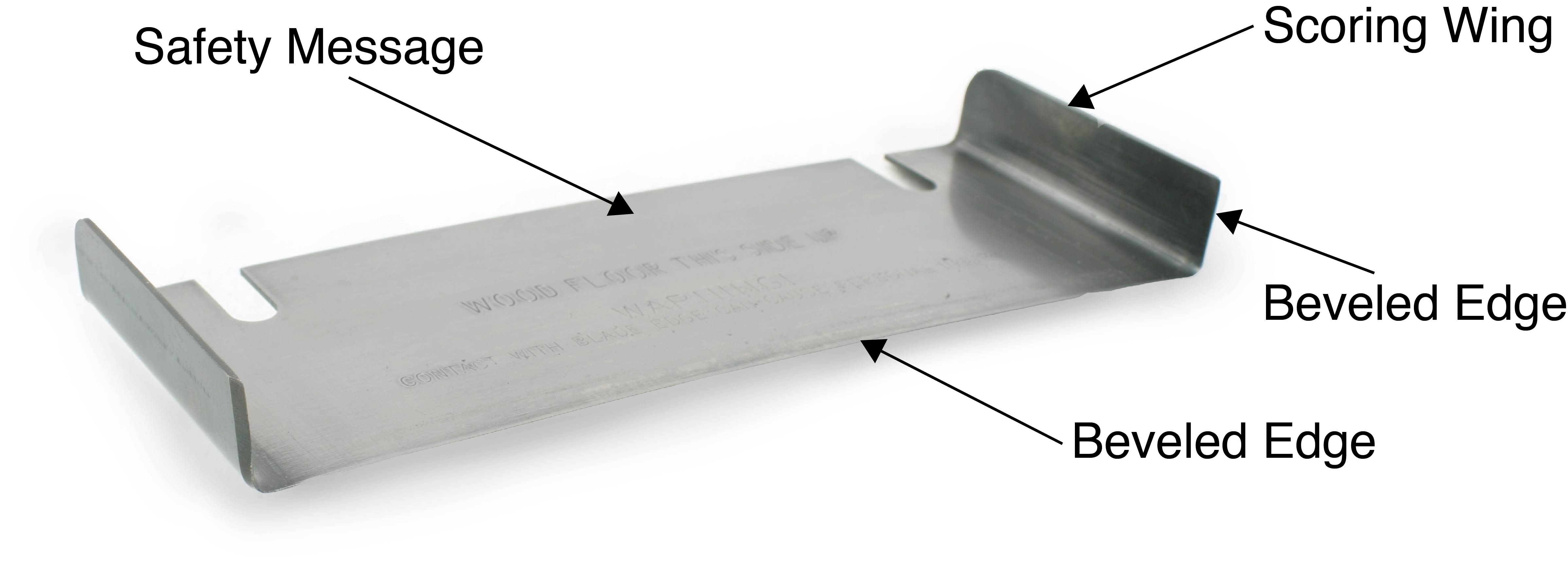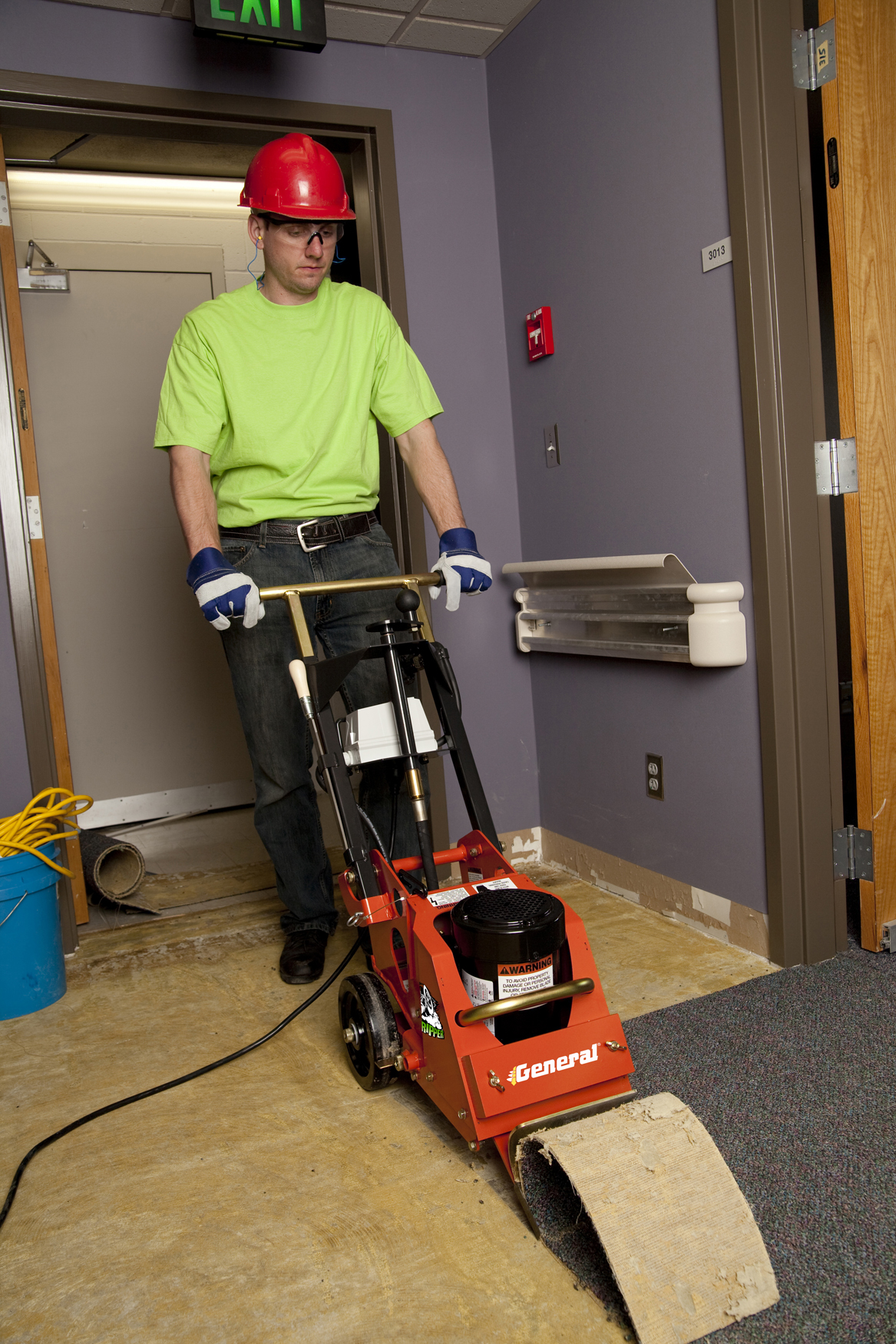How Should a Flat, Beveled Edge-Type Tile Stripper Blade be Used?
What’s the correct use of a beveled edge blade? Typical blades are available in a variety of widths and are very popular for removing VCT type materials (usually 12 inch square) from both concrete and wood surfaces:
- Can feature both single and dual, beveled edges depending upon configuration.
- Beveled edge faces UP and TOWARD operator when used on a concrete surface.
- Beveled edge faces DOWN and AWAY from operator when used on a wood or some underlayment materials.
- Use of a blade with beveled edge facing UP and TOWARD operator on a wood floor will produce severe damage and significantly reduce machine control.

Need help?
Call us at 800.533.0524, or
email: support@generalequip.com.

FCS16-1300 Single Beveled Edge Blade being used to remove VCT from a concrete floor with a General FCS10 RIP-R-STRIPPER.

If you have any questions or comments, please feel free to contact us.
Telephone: 800.533.0524 | Email: support@generalequip.com





